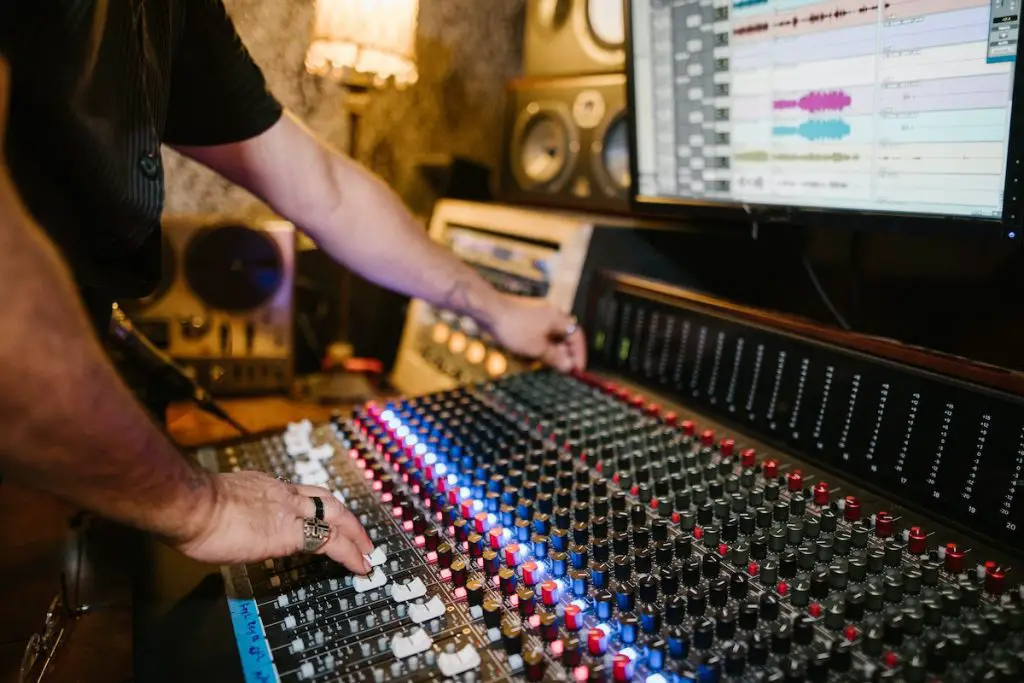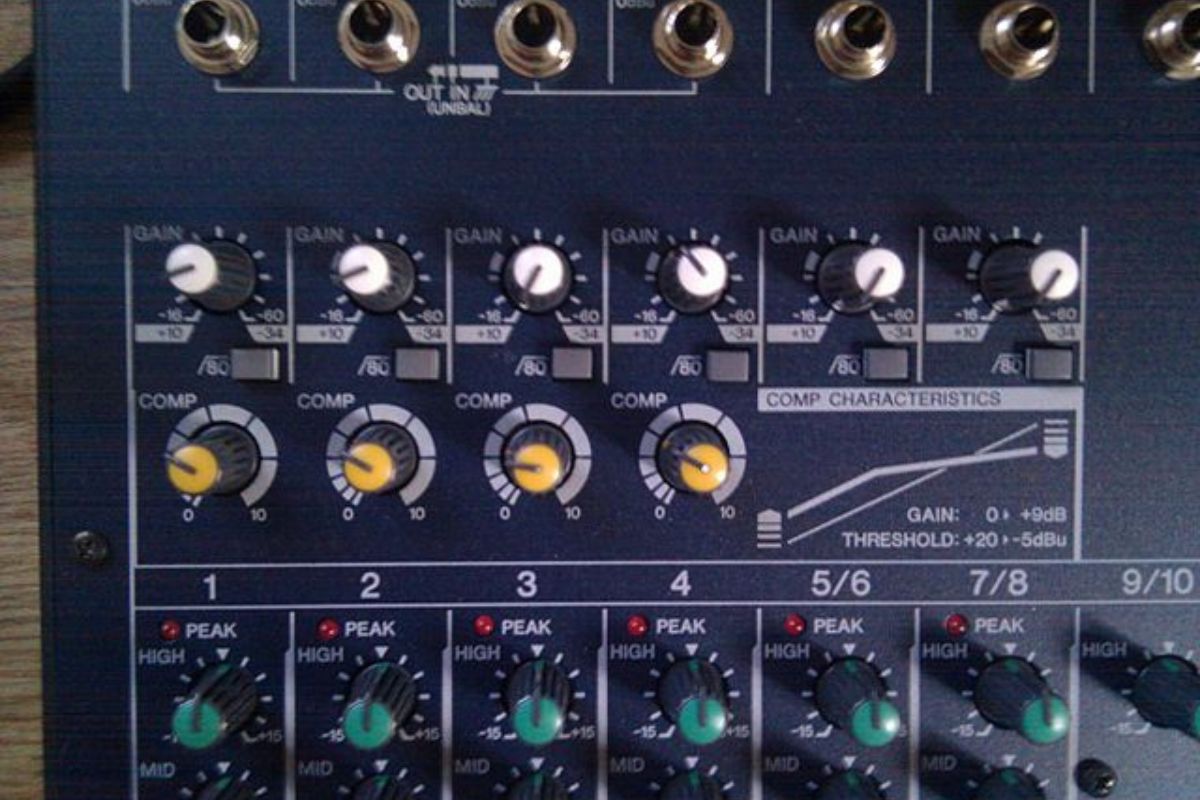Are you ready to pump up the volume of your audio knowledge? Well, hold on to your headphones because we’re about to turn up the gain on your understanding of a critical concept in the audio world. Introducing the magic of audio gain! Prepare to dive into the intricacies of this vital component. Don’t worry; we won’t leave you on mute!
You might think that gain is just another word for volume, but it’s actually a whole new ballgame. We’ll explore the differences between the two, the various types of gain, and how to set the perfect levels for your audio devices. Say goodbye to distortion, clipping, and a cacophony of chaos.
What is gain in audio? Gain refers to the process of increasing the amplitude or strength of an audio signal in a system, playing a crucial role in achieving optimal sound quality. It differs from the volume, which is the perceived loudness of a sound.
What is gain?
Many people associate gain with the output signal level of a sound system that comes from the speakers. Your compressor plug-ins will almost certainly have a “makeup gain” option. While the label on that knob may state “gain,” it is really just a fancy way of saying “output volume.”

The fundamental definition of gain in analog audio days is the audio signal’s input level. In essence, the gain control is what you change before proceeding to other types of processing. A gain change can have a significant impact on the tone of your audio signal. For example, your microphone preamp may have gain control.
You can adjust the level of the microphone with this gain knob. Depending on how high or low you set your gain, your console or audio interface will react differently. The same thing may be found on a guitar amplifier. Most guitar amplifiers have a volume and gain knob. To add grit and distortion, use the gain knob to adjust the voltage coming in.
Indeed, the initial occurrences of distortion were caused by guitarists overloading their amplifiers’ preamp sections, which is why many people refer to gain as “distortion.”
AKAI Professional MPK Mini MK3

AKAI Professional MPK Mini MK3
What is gain used for?
Gains serve various purposes to ensure optimal sound quality and control. From proper input levels to creative sound manipulation, gain plays a pivotal role in shaping your audio experience. Below are some of the applications of gain and its significance in different audio scenarios.
- Gain control is crucial for obtaining the proper level of an audio system, which is different from loudness.
- Use gain control on microphone preamps to increase mic signal levels, as mic level signals have lower amplitude than line level or instrument signals.
- Providing adequate gain at the input stage prevents a low signal-to-noise ratio, ensuring clear audio capture.
- Utilize a pre-amp to boost mic signal levels, allowing for high-quality signal recording without unwanted noise.
- Analog-to-digital converters (ADC) require optimal gain levels to produce high-fidelity recordings while avoiding digital clipping. Clipping in digital systems results in undesirable distortion due to voltage limitations.
- Gain can be used creatively, such as in guitar amplifiers, to produce a heavy, saturated, or distorted tone by pushing internal circuitry.
- The creative use of gain is not limited to amplifiers, as demonstrated by John Lennon’s “Revolution” guitar tone, achieved by feeding a high input signal into a mixing console’s pre-amp.
What are the common types of audio gain?
Let’s explore the two main types of audio gain and their applications in shaping your sound.
Active gain
Active gain refers to the amplification introduced to an audio signal by powered devices, such as amplifiers or mixers. These devices increase the strength of the signal, making it suitable for processing, recording, or playback.
Active gain is essential in various audio applications, such as boosting the level of microphone signals, which are typically low in amplitude, or controlling the overall loudness in a mixing or recording setup.
Passive gain
Passive gain, on the other hand, is associated with non-powered devices like passive speakers and is generally used for signal attenuation or balancing rather than amplification. These devices may use resistive or capacitive elements to modify the audio signal without adding power.
Passive gain applications can include adjusting the signal level between different devices in an audio chain or protecting sensitive equipment from excessively high input levels.

Tips for setting gain levels in various audio devices
Properly setting gain levels in various audio devices is crucial for achieving optimal sound quality and minimizing noise and distortion. Here are some essential tips to master the art of gain adjustment, so you can elevate your audio production skills.
- Gain staging: Ensure the audio is set to an optimal level for the next processor in the chain to minimize noise and distortion. This helps you achieve the best possible sound for your recording.
- Mics and DIs: These devices need to go through an amplification stage (preamp) before being recorded. Setting the gain correctly ensures the signal is strong enough and provides the most noise-free transmission.
- Trial and error: Setting the gain level might involve some trial and error. Adjust the gain while monitoring the input signal, aiming for a strong but not distorted signal.
- Gain-high/level-low combination: If you want a warm sound, use a higher gain setting and lower output level. This combination will give you the desired warmth.
- Gain-low/level-high setting: If you want a cleaner sound, turn down the gain and compensate for the lower output with the level control. This setting provides the cleanest sound possible from the preamp.
How does gain differ from volume?
Gain and volume are related concepts in audio, but they serve different purposes and have distinct positions in the signal path. Gain refers to the input level of the audio source that goes into an amplifier or audio interface, and it essentially acts as an amplitude control at the input stage of a piece of hardware or software.
Understanding the difference between gain and volume is crucial for better control over the tone of your instruments and achieving better mixes.
On the other hand, volume is the loudness and intensity you hear emitting from speakers, and it controls the loudness after the audio signal has passed through the electronics. Understanding the difference between gain and volume is crucial for better control over the tone of your instruments and achieving better mixes.

Does gain always mean distortion in audio?
While gain and distortion are often associated, it’s crucial to understand that they are not inherently the same. Gain refers to the amplification or attenuation of an audio signal’s level. While excessive gain can lead to distortion if the signal becomes too loud and exceeds the system’s capacity, proper gain staging and control ensure that audio signals remain clean and free from unwanted distortion.
If you’ve ever played guitar, you’ve likely encountered gain controls on pedals or amplifiers. These controls increase distortion and saturation in your signal. However, it’s important to note that gain in this context refers specifically to amplifying the signal beyond the clipping point. Gain is the go-to parameter for achieving that coveted crunchy or overdriven tone. Here’s a brief breakdown.
Gain is the go-to parameter for achieving that coveted crunchy or overdriven tone. Here’s a brief breakdown.
In audio production, it’s common practice to record clean signals by applying just the right amount of gain. By carefully managing gain throughout the signal path, you can maintain optimal headroom and ensure the fidelity of your recordings. This approach minimizes noise and unwanted artifacts, providing a clean canvas for further processing.
What are the advantages and disadvantages of using gain in your music?
Understanding the advantages and disadvantages of gain in music production can help you make informed decisions and achieve optimal results. Let’s explore the pros and cons:
Advantages
- Ensures clean and distortion-free recordings.
- Preserves dynamic range and allows for better control during mixing and mastering.
- Maintains optimal signal-to-noise ratio for high-quality audio.
- Prevents clipping and distortion in the digital domain.
- Allows for better utilization of headroom and reduces the risk of audio artifacts.
Disadvantages
- Risk of introducing unwanted noise and distortion into recordings.
- Limited control over the dynamic range leads to challenges during the mixing and mastering process.
- Increased likelihood of clipping and audio artifacts.
- Difficulty in achieving a balanced mix due to inconsistent signal levels.
- Compromised audio quality and overall impact of the final production.
Conclusion
Well, folks, we’ve reached the end of our sonic journey! Do you feel like your audio knowledge has been amplified to new heights? Did we turn the gain up on your understanding of this essential audio concept? Let me know in the comments section below – I read and reply to every comment!
If this guide resonated with you, don’t keep it on the down low! Share it with a friend, and explore my full blog for more insights and advice on the world of audio. Before I sign off, here’s a little pun to leave you smiling: Why did the audio engineer get in trouble with the law? Because he was caught boosting signals! Thanks for tuning in, and happy audio adventures!
Key takeaways
This article covered what is gain in audio. Here are some key takeaways:
- Gain is the increase in amplitude or strength of an audio signal, its important for optimizing sound quality in devices like amplifiers and mixers.
- Active gain is used in powered devices, while passive gain is found in non-powered devices.
- Proper gain staging is essential to minimize noise, distortion, and clipping, resulting in better overall sound quality.
- Understanding and adjusting gain levels helps prevent common issues such as audio clipping and gain-related distortion, ensuring clean recordings, dynamic control, and balanced mixes.















